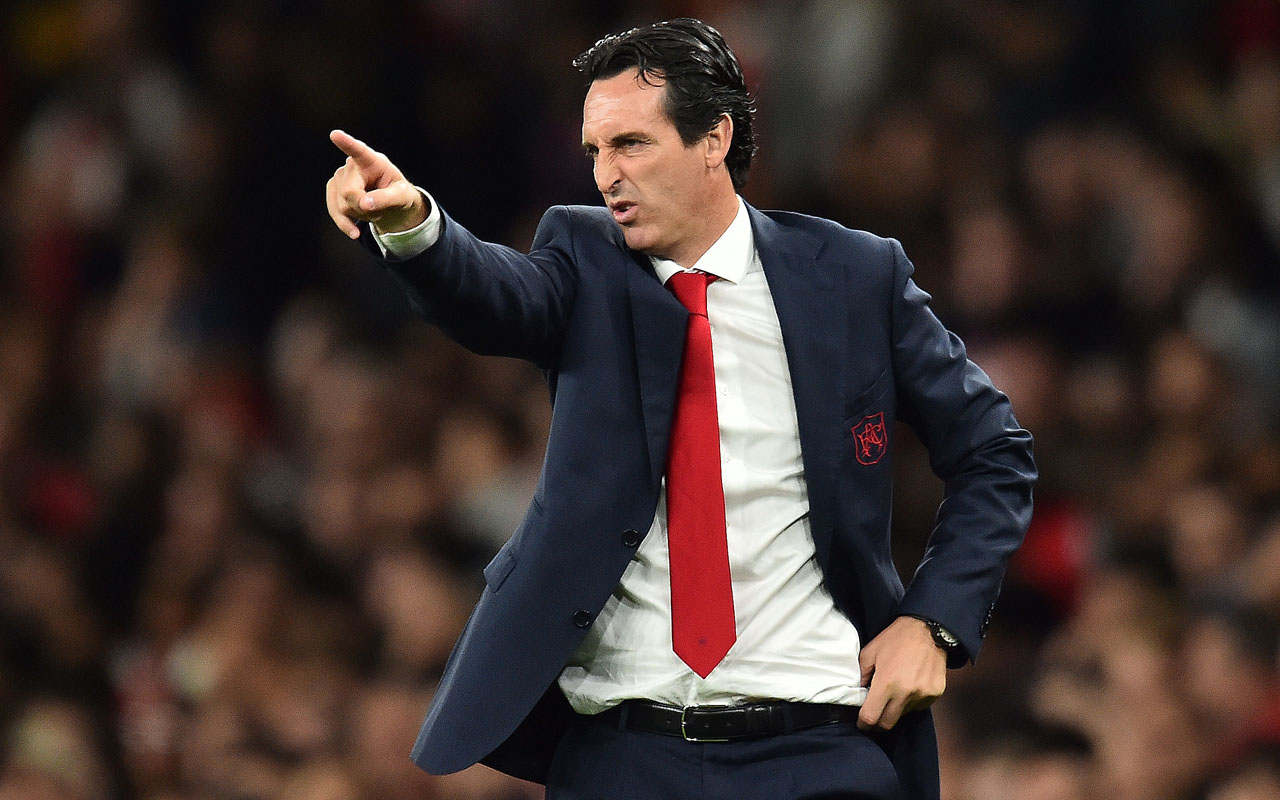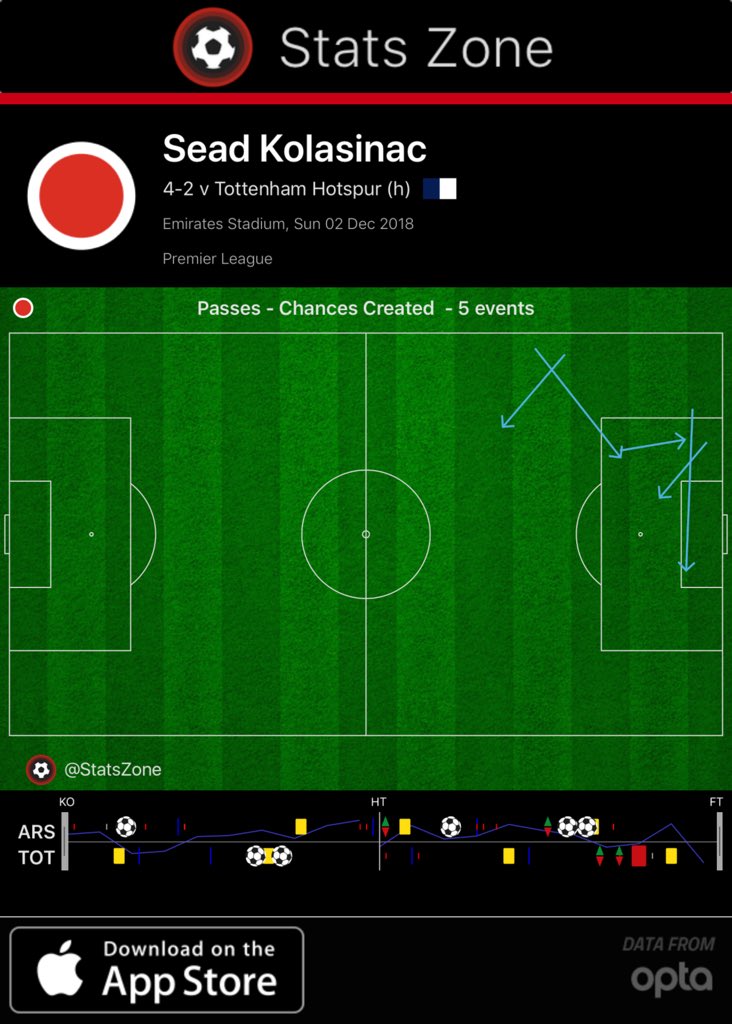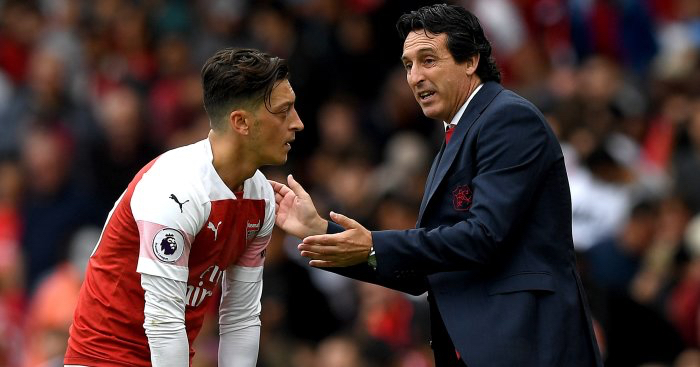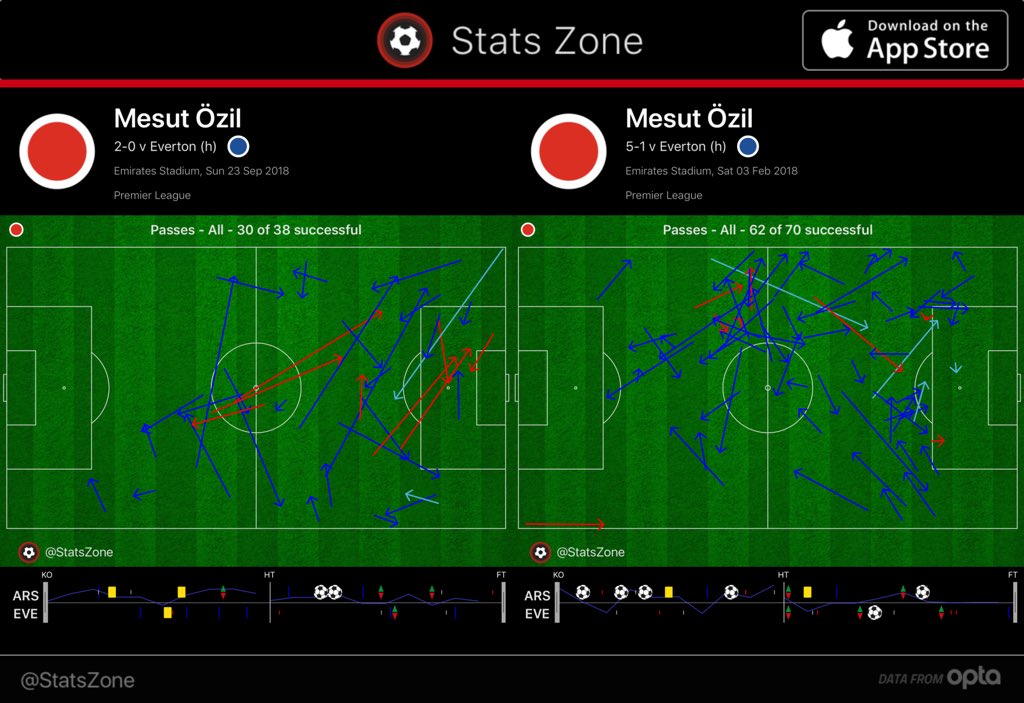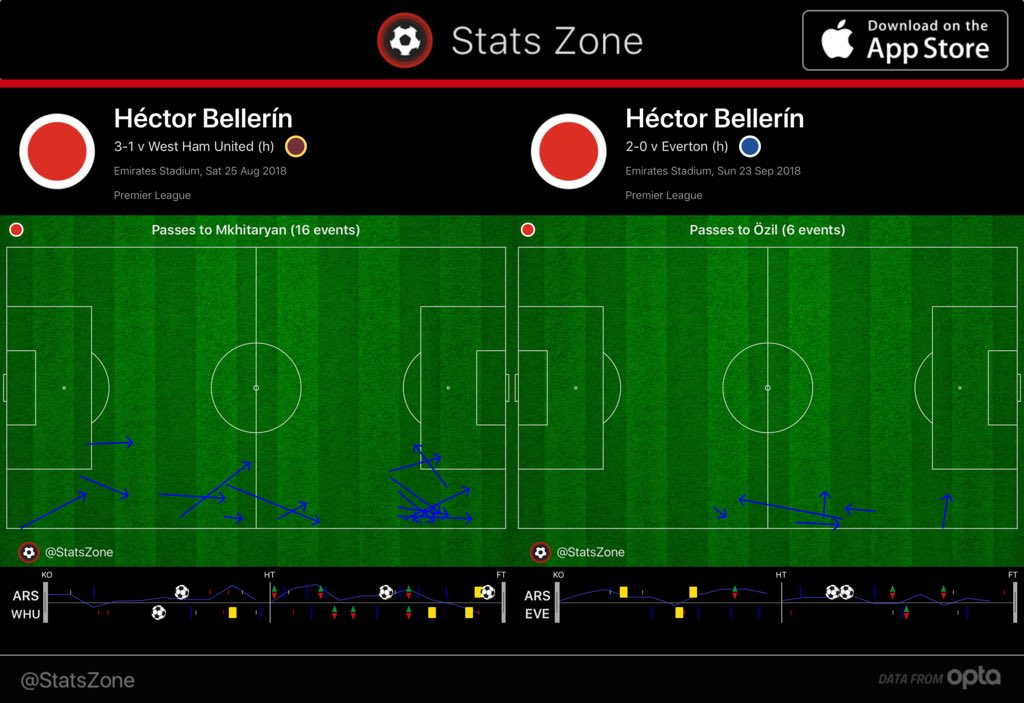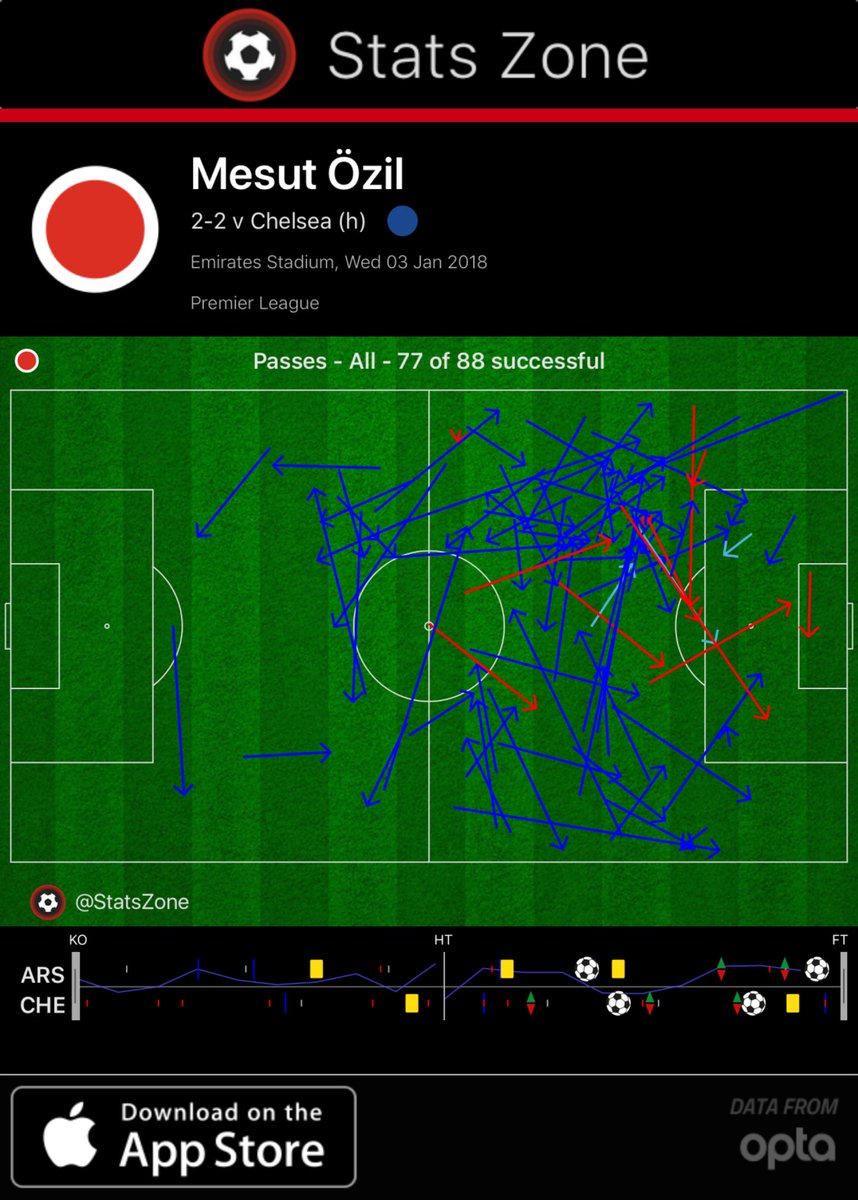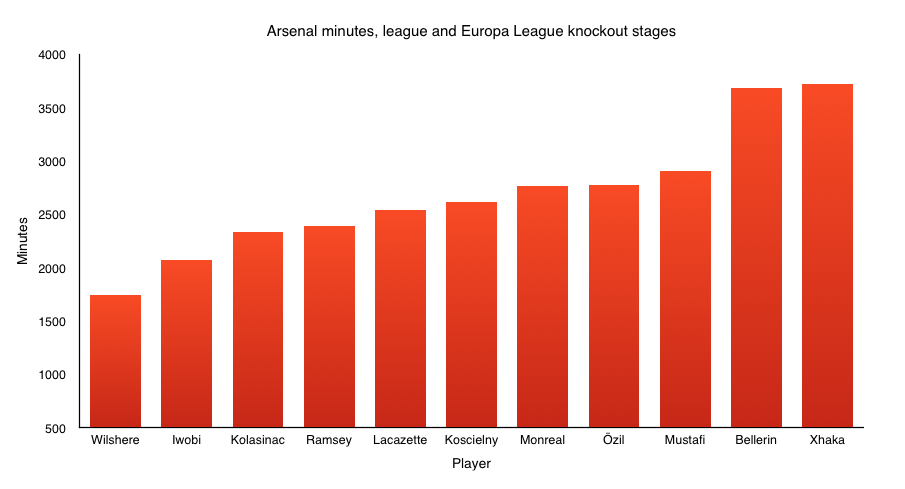Ranking the top 25 individual Arsenal seasons of the Emirates era
It can feel hard to believe, but Arsenal have been playing at the Emirates stadium for the best part of 14 years now. While this period hasn’t seen the same level of team success that Arsenal experienced at the end of their time at Highbury, the Gunners have still had many world class players who have produced some phenomenal seasons in Arsenal colours. Here are the best of them ranked. But first, a few things to note:
I thought about limiting entries to one season per player but decided not to. However, I have tried to reflect a broad spectrum of players who have played for Arsenal in this time. Realistically there have been a handful of Arsenal players who truly standout for their exceptional quality in this period, and there could be a case for them making up a large chunk of the 25 best seasons. I feel the exercise is more interesting, however, if it gives preference to the standout season of a good player over a regular season by a world class one. Players playing different roles also matters. For example I haven’t included van Persie in 10/11 - a season one could argue should make the top 10 - since it was essentially an injury plagued prelude to his 11/12 self, which will be a contender for the top spots. On the other hand, central midfield Cazorla and attacking midfield Cazorla were different players, and therefore each role has a unique case to be in the list.
Stats use
In the statistical summaries, all stats are league only, unless they’re put in (brackets) in which case they’re all comps.
NPG = Non-penalty goals. Their total goals with penalties removed.
90s = Their number of minutes divide by 90. A more accurate representation of their game time than the appearance stat.
League goal and assist stats come from fbref.com. NPG stats for all comps come from transfermarkt.com. Other stats come from whoscored.com where possible.
Now, onto the list.
25. Gilberto - 2006/07
Statistical highlights: 32.6 (45.5) 90s played. 5 (5) NPG.
Arsenal’s first season at the Emirates Stadium was arguably the club’s least eventful. The team finished fourth in the league, a long way behind second but comfortably ahead of fifth. The Champions League and FA Cup meanwhile, saw underwhelming exits at the last 16 stage. A dramatic league double over United (the last time Arsenal would do such a thing) and the run to the league cup final were the highlights. The stadium shift also coincided with a genuine change in eras that occurred this season. Bergkamp, Pires, Campbell, Cole, Reyes and Lauren all left the club, and while Thierry Henry stayed, he missed lots of the season through injury and only contributed 12 goals in all competitions. 19-year-old Cesc Fabregas won player of the year, though he would reach greater heights that we’ll look at later. One of the few people left over from the Invincibles era was Gilberto, who was the most senior player for most of the season and produced a level of consistency in defensive midfield that has only fleetingly been seen since.
24. Olivier Giroud - 2016/17
Statistical highlights: 12 (15) NPG & 3 (5) assists in 13.4 (19.8) 90s.
When thinking of Olivier Giroud’s best Arsenal seasons, I initially thought of 13/14 and 14/15. In 13/14 he led Arsenal’s line week in week out, accumulating a solid 16 goals and 8 assists in the league. The following campaign he suffered a bad injury in August, but upon his return went on a fantastic scoring streak that faded in April and May. With that in mind 16/17 might be considered a strange choice. He wasn’t even a starter for most of the season after all. That, however, is why it was Giroud’s best season. The super sub role suited him in a way trying to be the leader of a title challenge never did. He regularly came off the bench to offer a different threat, and he was prolific in doing so, most notably assisting just a few seconds after coming on in the FA Cup final against Chelsea. It isn’t a coincidence that Giroud went from being an incredibly divisive and at times outright unpopular player in his first four years at the club, to an extremely popular one, whose name was sung around the Emirates stadium while he played in a Chelsea shirt last year. That wouldn’t have been possible, without his 16/17.
23. Alexandre Lacazette - 2018/19
Statistical highlights: 13 (19) NPG & 8 (11) assists in 27.8 (37) 90s.
Given his troubles this season, it’s easy to forget that Alexandre Lacazette was a hugely popular player as recently as the summer, and comfortably beat out Pierre-Emerick Aubameyang in the fan vote for player of the season in 2018/19. His output was solid rather than spectacular, with 13 goals and 8 assists in 28 90s in the league. But Laca did have a habit of scoring in the big games at the Emirates stadium, netting against Liverpool, Tottenham and Chelsea, as well as against Napoli and Valencia in the Europa League knockouts. His away record mirrored the team’s however, and it’s what stopped his season being a great one. Away from the Emirates, none of the English grounds he scored in that season are still Premier League grounds.
22. Per Mertesacker - 2013/14
Statistical highlights: 41/55 tackles, 59 interceptions and 248 clearances in 35 (52.5) 90s.
In the entire Emirates era, Arsenal have arguably only had one quality, reliable centre back pairing; Per Mertsacker and Laurent Koscielny. In no season was the partnership more important than in 2013/14. Arsenal famously had a handful of horrendous big away games that season, which overshadowed the fact that for the most part, Arsenal were extremely solid defensively that season. Koscielny was and has been the more celebrated of the pair, fairly I believe, but Mertesacker’s contribution shouldn’t be underestimated. His more sedated approach suited Koscielny’s more aggressive nature, and he provided the height to better deal with balls into the box. He was also tasked with more build up responsibilities of the two.
21. Alexander Hleb - 2007/08
Statistical highlights: 2 (4) NPG & 7 (11) assists in 27 (36.7) 90s.
Arguably no player on this list was a more divisive figure at the club than Alexander Hleb. For some, he is a cult hero, a player whose qualities best epitome Arsenal players. Someone who helped others play better and was central to the Wengerball style of play. For others his mediocre output was a sign he wasn’t good enough. There are people who have made countless compilations of Hleb’s old performances and relished over his pre-assist stats - the stat might even have been invented for him - and equally, there have been deceased Arsenal fans whose dislike for the player has been cast in stone. Regardless, 2007/08 was the peak of Hleb’s career, where he shone in a team that challenged the eventual Champions League winners for the title. A superb dribbler and decision maker, his ability to retain and progress the ball helped Cesc Fabregas reach new attacking heights, and saw Barcelona sign him in Pep Guardiola’s first summer.
20. Bacary Sagna - 2010/11
Statistical highlights: 3 assists, 67/75 tackles, 62 interceptions & 141 clearances in 33 (42.3) 90s.
Like some of the other defensive players on this list, identifying a best season for Bacary Sagna wasn’t easy. He wasn’t a flashy player who had brilliant and terrible moments, his strength was his consistency. Sagna wasn’t Arsenal’s greatest fullback from an attacking point of view - though he was capable of contributing - but that wasn’t his role in the side. With a more up and down fullback in Gael Clichy on the other flank, and right sided attacker in Theo Walcott who was more wide striker than wide midfielder, Sagna had a considerable defensive workload that he rarely failed to handle. His aerial abilities were also important on set pieces and he was often the target of Szczesny’s goal kicks this season.
19. Nacho Monreal - 2015/16
Statistical highlights: 3 (4) assists, 79/109 tackles, 106 interceptions, 114 clearances in 36 (43.7) 90s.
While in many ways, Nacho Monreal was similar to Sagna, a fullback known primarily for their defensive work, he had more peaks and troughs throughout his Arsenal career. He made a strong start after his move in January of 12/13, but endured some difficulties after that. It wasn’t until the second half of 14/15 where he established himself as one of Arsenal’s best defenders. He carried that form into 2015/16 with a series of imperious displays, reading the game brilliantly and being a significant upgrade in possession on what Kieran Gibbs had previously been offering at LB.
18. Mikel Arteta - 2011/12
Statistical highlights: 6 NPG, 2 assists, 91% pass accuracy, 72/105 tackles & 55 interceptions in 27.5 (35.7) 90s.
I have a lot of affinity for Mikel Arteta’s second season at Arsenal, but in the end I went with his first as his standout season. With Arsenal in a potential crisis at the start of the 2011/12 season, Arteta’s arrival brought the much needed stability that allowed Robin van Persie’s attacking brilliance to not go to waste. While many viewed his arrival as a like for like replacement for the creative brilliance of Cesc Fabregas, Arteta instead filled the role of all-round midfield general. With Jack Wilshere also missing the season, and Alex Song taking up fewer of his defensive responsibilities, Arteta had to fulfil multiple responsibilities, and he did all of them to a high level. His almost immediate take up of a leadership role in the dressing room was also crucial, the extent to which probably wouldn’t be fully appreciated until he became manager over seven years alter.
17. Mesut Özil - 2017/18
Statistical highlights: 4 (5) NPG, 8 (12) assists, 87% pass accuracy & 84 chances created in 24 (32.8) 90s.
I expect this to be possibly the most controversial entry on the list but I consider 2017/18 to be Özil’s second best season for Arsenal. And anything close to peak Özil is worthy of a place fairly high up on the list. While 2017/18 wasn’t ultimately a good season for Arsenal, it doesn’t mean there weren’t periods of good football or strong individuals seasons. Arsenal were an attacking force at home in 2017/18 and also dominated the Europa League knockouts until wasteful finishing and a defensive mistake cost them against Atletico. Özil was a significant part of both those things. Contrary to popular perception he did not experience a significant drop in form after agreeing a new contract. In fact with the exception of the League Cup final and Atletico Madrid away, he produced good performance in almost every game he stepped on the pitch for from February to May. I made the case for his 17/18 season in far more detail on the site previously: Mesut Özil: Beyond the Narrative — Arsenal Vision Post Match Podcast
16. Samir Nasri - 2010/11
Statistical highlights: 9 (12) NPG, 1 (4) assists, 88% pass accuracy, 61/117 dribbles & 60 chances created in 26.6 (38) 90s.
In some ways, Samir Nasri was a better version of Alex Hleb. An attacking midfielder who was easy on the eye, good on the dribble had a final pass, but also divided fans, and was never able to consistently produce the kind of output needed to be considered a truly world class player. 10/11 was his peak in an Arsenal shirt. In the autumn, when Robin van Persie and Cesc Fabregas both missed significant game time, it was Nasri who stepped up and carried the team, scoring a glut of goals and playing at a level not many Arsenal players have reached. The trouble with Nasri is it never lasted. From the Fulham game in early December onwards, he got only two goals along with no assists in the league, and that stops him breaking into he top 15.
15. Aaron Ramsey - 2017/18
Statistical highlights: 7 (11) NPG, 8 (9) assists, 85% pass accuracy & 29/36 dribbles in 20.5 (27.4) 90s.
While the performance levels of Özil in 2017/18 might up for debate, the quality that Aaron Ramsey displayed throughout the season should be crystal clear. Amid the chaos of the season, the Welshman produced the second best season of his 11 year Arsenal career. Ramsey essentially had two separate seasons, one before December (when he tore his hamstring) playing in a 3-4-2-1 in the league, and another in 2018 playing in a 4-2-3-1 mostly in the Europa League. Both systems helped get the most out of him. The three at the back shape allowed for an extra central player to cover for his marauding runs, while the 4-2-3-1 surrounded him with highly technical attacking midfielders. Playing mostly once a week all season also allowed him to have one of his healthiest campaigns since 2013. The result was 13 goals and 9 assists in just 27 90s playing almost exclusively from deep in midfield.
14. Jack Wilshere - 2010/11
Statistical highlights: 1 (2) NPG, 3 (9) assists, 86% pass accuracy & 61/91 dribbles in 29.5 (42.4) 90s.
Given the problems that would plague the rest of Jack Wilshere’s career, it shouldn’t be forgotten what an elite level talent he was. It’s almost cruel to think that the standout season of his career came in his first full campaign, aged just 18 and 19. The qualities he displayed in that season where that of a natural born Arsenal player. His passing, spatial awareness, press-resistance and ability to drive forward and play 1-2s helped Arsenal produce some of their most aesthetic football ever in 2010/11. The peak was of course his performance against Barcelona, where his bravery and willingness to receive the ball, combined with his awareness and ability to take it on the turn, helped Arsenal turn the tie against possibly the greatest club team of all time.
13. Pierre-Emerick Aubameyang - 2019/20
Statistical highlights: 16 (19) NPG, 1 (1) assist in 25.6 (30.1) 90s.
In terms of output per 90 minutes, there have actually been many better Arsenal seasons than Aubameyang’s 2019/20. His output in the league roughly translates to a goal or assist in two of every three games, which isn’t even as good as the Ramsey 17/18 season we just looked at. But this hasn’t been a typical Arsenal season. It’s seen their most tepid attacking displays in any campaign of the Emirates era, where the only creative player to perform at a high level has been the 18-year-old playing at left back. And amongst this, Aubameyang has managed to stay afloat as a goal scoring extraordinaire. He currently has the most non-penalty goals in the Premier League. Of those 16 only three didn’t come in games Arsenal drew or won by a solitary goal, and two of those three were the opening goal in a game. Arsenal sit 9th thanks to Aubameyang. Surprisingly that’s a compliment not a criticism.
12. Theo Walcott - 2012/13
Statistical highlights: 14 NPG & 10 assists.
It goes somewhat under the radar - to the extent that calling it underrated has actually become something of a meme in sections of the Arsenal twittersphere - that Theo Walcott’s 2012/13 season is one of the most productive wide forward seasons by a Premier League player. A combination of factors - injuries, contract disputes, wanting to play striker - meant he only played 25 90s, but he still managed to produce 14 goals and 10 assists, only one goal and assist fewer than Gareth Bale, who won PFA Player of the Year that season. A year before his tragic ACL injury, this was Walcott at his peak; as fast as ever, but also stronger, and more refined in his movement, decision making and technique. If he’d started 30+ games on the right that season, he would’ve had a strong claim to breaking into the top ten on this list.
11. Santi Cazorla - 2012/13
Statistical highlights: 12 NPG, 11 assists, 97 chances created, 87% pass accuracy & 86/131 dribbles in 36.8 90s.
With Robin van Persie heading for the exit door in 2012, just a year after Cesc Fabregas and Santi Nasri, Arsenal were in desperate need of a new star player, and in cash strapped Malaga, they found one at discount price. One of La Liga’s best players for years, Cazorla was a coup at under £20m, and quickly established himself as Arsenal’s new best player. 12/13 was a season of equity for the Gunners. van Persie’s 30 league goals were replaced by four players reaching double figures. But Cazorla was the best among them. He was Arsenal’s new dictator in the final third, either as a number 10 or just off the left, making use of his trademark two-footedness and low centre of gravity, all while producing 12 goals and 11 assists.
10. Santi Cazorla - 2014/15
Statistical highlights: 1 NPG, 11 assists, 78 chances created, 89% pass accuracy & 87/121 dribbles in 33.2 90s.
While it’s hard to separate these two Cazorla seasons on a quality level, unlike, say, Robin van Persie’s 10/11 and 11/12 seasons, these two are actually rather different on a stylistic and tactical level. After Mesut Özil’s arrival in 2013, Cazorla’s importance in the attacking trio declined. It’s possible that this also coincided with a natural physical decline that would’ve seen his role need to change anyway, but it led to a less spectacular 13/14 from the little Spaniard. This continued into a reasonably slow start in 14/15, but when Özil got injured, Cazorla was rejuvenated as a genuine number 10. This led to the growing realisation that his qualities, at least aged 30, were more that of a midfielder than forward. And when Özil returned in January, Cazorla’s new position felt a natural fit. Central midfield.
An incredibly gifted technician with brilliant close control, but also not the quickest over long distances, a deeper role suited Santi perfectly. Here he could evade pressure, dictate from deep and progress the ball to the likes of Özil and Alexis Sanchez who were able to do the damage in the final. While in 13/14 it felt like a good performance from Cazorla or Özil came at the expense of the other, from 14/15 onwards they combined brilliantly, with Cazorla to Özil being the most prominent pass combination in the league. He was able to maintain his creativity as well. From his deeper position he still produced nine assists from open play in the league.
9. Emmanuel Adebayor - 2007/08
Statistical highlights: 21 (27) NPG and 4 assists in 32.5 (41.1) 90s.
When, at the start, I mentioned that the standout season of good players was perhaps more interesting than a typical season from world class players, Emmanuel Adebayor’s 07/08 campaign is perhaps the best example. Adebayor had a good career of course, but 07/08 stands out amongst the rest of the pack. It came somewhat out of the blue as well. Having never reached 10 goals in a league season before, he hit 24 in 07/08 (3 of which were pens).
At his best Adebayor was the complete package, a threat on crosses and on balls in behind. His partnership with Cesc Fabregas, who we’ll touch on shortly, was arguably one of the most iconic striker-playmaker partnerships in Arsenal history. Many of the Spaniards best ever Arsenal assists were chipped through balls onto the chest of Adebayor. What stops Adebayor being even higher in this list is that his was a streaky season. He went on goal gluts but also droughts. A seven game drought from the Birmingham game onwards (where Eduardo broke his leg), only one of which Arsenal won, proved costly in the title race. A quarter of his league goals also came against arguably the worst side in Premier League history. Still, it remains one of the best Arsenal striker seasons in the post-Henry era.
8. Laurent Koscielny - 2013/14
Statistical highlights: 2 NPG, 94% pass accuracy, 54/65 tackles, 89 interceptions & 234 clearances in 30.5 (44.2) 90s
First off a disclaimer. I’m not sure whether 13/14 was Koscielny’s best season. I think any of that, 14/15 and 15/16 are contenders. 13/14 is definitely his most celebrated, but I think that might be a case of circumstance. The end of 12/13 was when he established himself for good in the Arsenal team, meaning 13/14 was the season when Arsenal fans realised they had a, at least borderline, world class defender in their ranks. The two seasons after that were just more of the same, so don’t standout the same way. 13/14 was also probably simply a more celebrated Arsenal season overall.
Nonetheless, at least one of them deserves to be celebrated, because at his peak, Koscielny was one of the finest defenders in the league. He combined great athleticism with a fantastic reading of the game, making him regularly a league leader in interceptions. His ability to perfectly time his step outs when defending in a high line and his knack for reading and intercepting cut backs and then calmly playing his way out of trouble were stand out plays of his. His one weakness was his defending of aerial balls. He wasn’t especially tall for a centre back, and his reading of aerial crosses was sometimes surprisingly poor considering how well he read crosses on the ground. But that’s also why his partnership with Per Mertesacker was so successful. In no season did they play as regularly together as 13/14, and that’s another reason Koscielny’s 13/14 season stands out. His brave equaliser in the FA Cup final also helps.
7. Alexis Sanchez - 2014/15
Statistical highlights: 16 (25) NPG, 8 (13) assists, 82 chances created & 115/196 dribbles in 32.8 (48) 90s.
When Alexis Sanchez was bought in the summer of 2014, it felt like a landmark moment for the Arsenal rebuild. For the second year in a row, Arsenal had bought a prominent attacker from one of the two Spanish giants in the prime of his career. What more, he filled a gaping hole in the team. Arsenal in 13/14 had had many technical attacking midfielders, but with Theo Walcott missing nearly all of the campaign, were desperately short on cutting edge.
While his arrival failed to bring about a new golden era for the club, it wasn’t down to a failure in Alexis’ performances, and his first season was close to being his best. The first half of Arsenal’s season was undermined by a combination of injuries and some unfortunate results, but Alexis’ performances as the main man stood out. He was the team’s best scorer, creator and most dangerous dribbler. Alexis’ individual contribution waned in the second half of the season, despite the team growing in strength, but he still stepped up with two gaols in the FA Cup semi final and assisted and scored the first two goals in the final. His 25 NPG in all comps has only been topped by a player in two seasons in the Emirates era, one of which would be by himself.
6. Cesc Fabregas - 2007/08
Statistical highlights: 7 (13) NPG & assists in 31.8 (43.2) 90s.
The summer of 2007 was a scary time for Arsenal fans. With Thierry Henry departing the club, Arsenal no longer had any genuine superstars in the team, and were staggeringly short of experience. Some feared this would lead to an imminent decline, or at least a prolonged period of not challenging for the big trophies. What followed instead was the closest Arsenal have come to winning a Premier League title in the entire Emirates era. Part of the reason for that was the stepping up of Emanuel Adebayor, as mentioned previously. The main reason, however, was the progression of Cesc Fabregas, who, tasked with being the main man for the first time in his career, produced one of his best seasons aged just 20 years old.
The start of the season saw a huge goal glut for Cesc. By the beginning of November he’d already more than doubled his previous best campaign with 11 in all comps. While the goals dried up after that, he was still the league’s best creator and Arsenal’s main passer in midfield; and he would score the season’s most famous goal in March as Arsenal won 2-0 in Milan. While he would go on to arguably hit even greater heights later in his Arsenal career, in this campaign he was still playing in a midfield two. That makes his 24 direct goal contributions without pens, which, for example, surpasses any figure by Steven Gerrard in his Premier League career, even more extraordinary.
5. Aaron Ramsey - 2013/14
Statistical highlights: 10 (16) NPG, 8 (9) assists 32 chances created & 77/114 tackles in 19.6 (30.3) 90s
Even at the end of 2012/13, when Aaron Ramsey had become an important role player in a more resilient Arsenal team, no one could have expected the explosion that would occur the following term. To put simply, judged purely on any given player’s time on the pitch, there have been very few midfield seasons as influential as Ramsey’s 13/14 campaign in the recent history of European football.
Ramsey was a superstar in all phases of midfield play. In all comps he scored 16 goals, all from open play, in just 30 90s. Such a scoring rate was more prolific than what Olivier Giroud did that season, and was only bettered by Lukas Podolski and and Theo Walcott, who played far more limited minutes. He also created roughly one big chance every two games in the league, the best rate amongst a team featuring Özil, Cazorla, Rosicky and Wilshere. He led Arsenal with nearly four tackles per 90, and he played the fourth most passes per 90 in the entire league, behind only Arteta at Arsenal. He was a dominate figure defensively, in build up, creatively and in front of goal.
The only problem is that period of on pitch domination was limited. A thigh injury on boxing day that experienced multiple set backs meant he played only half of Arsenal’s Premier League minutes. One of the greatest August to Decembers in Premier League history didn’t even end up in the PFA Team of the Year because of it. But Ramsey did return in time to score the winner in the FA Cup Final, and maybe that should place him above at least the season next on this list, though that player reached his own himalayan heights.
4. Cesc Fabregas - 2009/10
Statistical highlights: 12 (13) NPG, 13 (17) assists, 95 chances created, 51/81 dribbles & 62/90 tackles in 24.4 (33.2) 90s.
Throughout his career Cesc Fabregas has played in a variety of roles and positions. Despite having a pretty straightforward skillset he’s played everywhere from deep plying playmaker to centre forward. But without a doubt, no iteration was better than the number 10 version that played for Arsenal in 2009/10. It was in 07/08 that Fabregas added the ability to drive forward and score goals to his repertoire of passing and creativity, but even then his evolution into the complete attacker in 09/10 was somewhat unexpected. His was a creative season every bit as good as Mesut Özil’s in 15/16; yet he was also Arsenal’s top scorer and someone who was capable of - excuse the rare mention of this cliche - grabbing the game by the scruff of the neck, driving the team forward and deciding matches in Arsenal’s favour. His substitute cameo against Aston Villa - one of the most iconic performance of the Emirates era - was the epitome of this. He was capable of, for want of a better term, heroball. Heroball that worked.
The numbers are staggering. Even accounting for Fabregas being on penalty duties for most of the season, he still produced more than one goal and assist per 90 minutes. He completed 3.9 key passes per 90 (by far the best figure in the league) and played 73 passes per 90 (only slightly behind Scholes in all players in the league). His individual brilliance was reflected in the team as well. Despite Robin van Persie missing most of the season with an ankle injury, meaning the Gunners played without a recognised centre forward for parts of the season, they still scored 83 goals, their third best tally in the Premier League era.
Just like Aaron Ramsey in 13/14, however, the ceiling of his season is capped by the injury issues he had that limited his appearances. He missed more than a third of Arsenal’s league minutes, and this prevented the team achieving more. In the 10 league games Fabregas and van Persie started together, Arsenal scored 35 goals. Alas, he and van Persie’s minutes combined that season only just passed the amount of minutes in a league season. In typical Emirates era Arsenal fashion, with better health they could’ve achieved even greater things. What they did anyway was still pretty remarkable.
3. Mesut Özil - 2015/16
Statistical highlights: 6 (8) NPG, 19 (20) assists, 86% pass accuracy & 146 chances created, an all time PL record, in 33.9 (43.8) 90s.
For Arsenal, 2015/16 was a season that offered so much hope and expectation. A hope and expectation that was ultimately met with complete disappointment. For whatever reasons, the majority of key players in one of Arsenal’s most talented ever squads failed to impact the season to the extent they would’ve hoped. Alexis Sanchez missed a significant chunk of the season through injury, and either side of that didn’t score in the number of games he usually did. Theo Walcott and Aaron Ramsey were extremely wasteful in front of goal. Olivier Giroud started strongly but his season is ultimately remembered for the goal drought that occurred in the period where the title charge slipped away. Santi Cazorla was on course for a strong season before his injury nightmare began. And Alex Oxlade-Chamberlain failed to make the leap many were predicting of him before the season.
All that left Mesut Özil, who managed to achieve the most influential and consistent season of his Arsenal career, and possibly his career as a whole. Statistically it holds claim to being the greatest creative season in Premier League history. His 146 chances created is a league record, and his 19 assists has only been bettered once, by Thierry Henry in 2002/03.
Some have accused Özil of dropping off in the business end of the season but his drop in assists owes as much to the volatile nature of the stat as it did any drop in his creativity. It’s also worth noting that it was his free kick that was headed in by Danny Welbeck against Leicester, and he scored and assisted in the 3-2 defeat at Old Trafford. Those were Arsenal’s two biggest moments in the title challenge, and Özil produced moments in both of them. Had Arsenal been capable putting on a more coherent display in the latter, it might have become one of, if not the, defining moment of his career. But such is the life of the Emirates era Arsenal superstar. Özil’s 15/16 was resigned to individual achievement.
2. Alexis Sanchez - 2016/17
Statistical highlights: 22 (28) NPG, 10 (17) assists, 78 chances created & 109/161 dribbles in (47) 90s.
After winning the Copa América Centenario as the tournament’s best player, Alexis Sanchez returned early to Arsenal in 16/17 in a new role. With Olivier Giroud not yet back to full speed after the Euros, Alexis started the season as the centre forward. Although not the Chilean’s personal position of choice, he would eventually begin to flourish in the role, and would stay there throughout the first half of the season. Alexis would be the team’s biggest goal threat, as his 28 NPG in all comps proved, but his interpretation of the role was that of a genuine false nine. He dropped deep to receive the ball and with willing runners in Mesut Özil and Theo Walcott, his full creative capabilities were unleashed as well. In total he finished with 28 NPG and 17 assists in all comps, the best all comps combination of the two in any Emirates era season.
Some might resent the idea of a season ranking so highly on the list when Arsenal finished fifth that year. But the Gunners’ Champions League streak didn’t snap because of Alexis’ performances. Arsenal’s 77 goals scored in the league that season is the club’s fifth best tally in the PL era, only bettered by seasons in the 2000s. What more, Arsenal finished the season with 75 points, a record for a club outside the top four, and were at a much greater pace for the majority of the season. Arsenal’s undoing was a period of wretched results in February and March. And even there, it was Alexis who scored the opening goal in defeat at West Brom, and assisted what could’ve been comeback instigating goals against Watford and at Anfield.
What more, Alexis returned to peak form after Arsenal’s late switch to a 3-4-2-1, operating in something of a hybrid inside forward and number 10 role. His performances couldn’t quite get Arsenal into the top four at the last, but he did score in both 2-1 wins against Manchester City and Chelsea at Wembley. A decisive contribution for silverware that gets him above the previous two entries in this rank.
1. Robin van Persie - 2011/12
Statistical highlights: 28 (32) NPG, 10 (10) assists, 92 chances created (4th most in the PL) & 42/66 dribbles in 37 (45.5) 90s. Directly involved in 53% of Arsenal’s PL goals.
Despite some tough competition from some world class players in their peak, choosing the best individual season from the Emirates era was still a relatively straightforward task. Fresh off losing his two best creative teammates the previous summer, and despite an early season crisis of results, Robin van Persie led Arsenal to a scarcely credible third place finish in the league in 2011/12, and by doing so produced one of the very best seasons in the history of the Premier League. His 28 NPG in the league was six more than any other Arsenal season in the Emirates era, and a figure that has only been bettered in three Premier League seasons. His goals also came in big matches and key moments. A hat-trick at Stamford Bridge, an equaliser and winner at Anfield, the equaliser in the 5-2 against Tottenham, a winner against Everton, goals in both fixtures against United (albeit in defeats), three goals in two games against Dortmund.
All that would’ve made for an extraordinary season from a pure goal scorer, but van Persie was so much more. He was a technical link up player first and foremost, who learned the art of poaching later. 11/12 saw his greatest combination of the two. His 92 chances created were the fourth most in the league, only marginally behind pure creators and passers in Silva, Mata and Modric. In total he provided ten assists in the league, three of which were to Theo Walcott who he combined with excellently all season.
A player with the movement and finishing to score a high quantity of goals, but one also capable of creating for himself, his teammates and producing the spectacular, to the extent he wasn’t reliant on world class service to win matches. Add in the durability that he had so frustratingly lacked throughout his Arsenal career until that point, and RvP 11/12 was the perfect player to build a team around. For many, van Persie’s 2012 move to United, and subsequent success with them, tainted his Arsenal career. But that can’t take away from the fact his last 18 months at the club are the highest level of football we’ve seen from a player at the Emirates Stadium.
